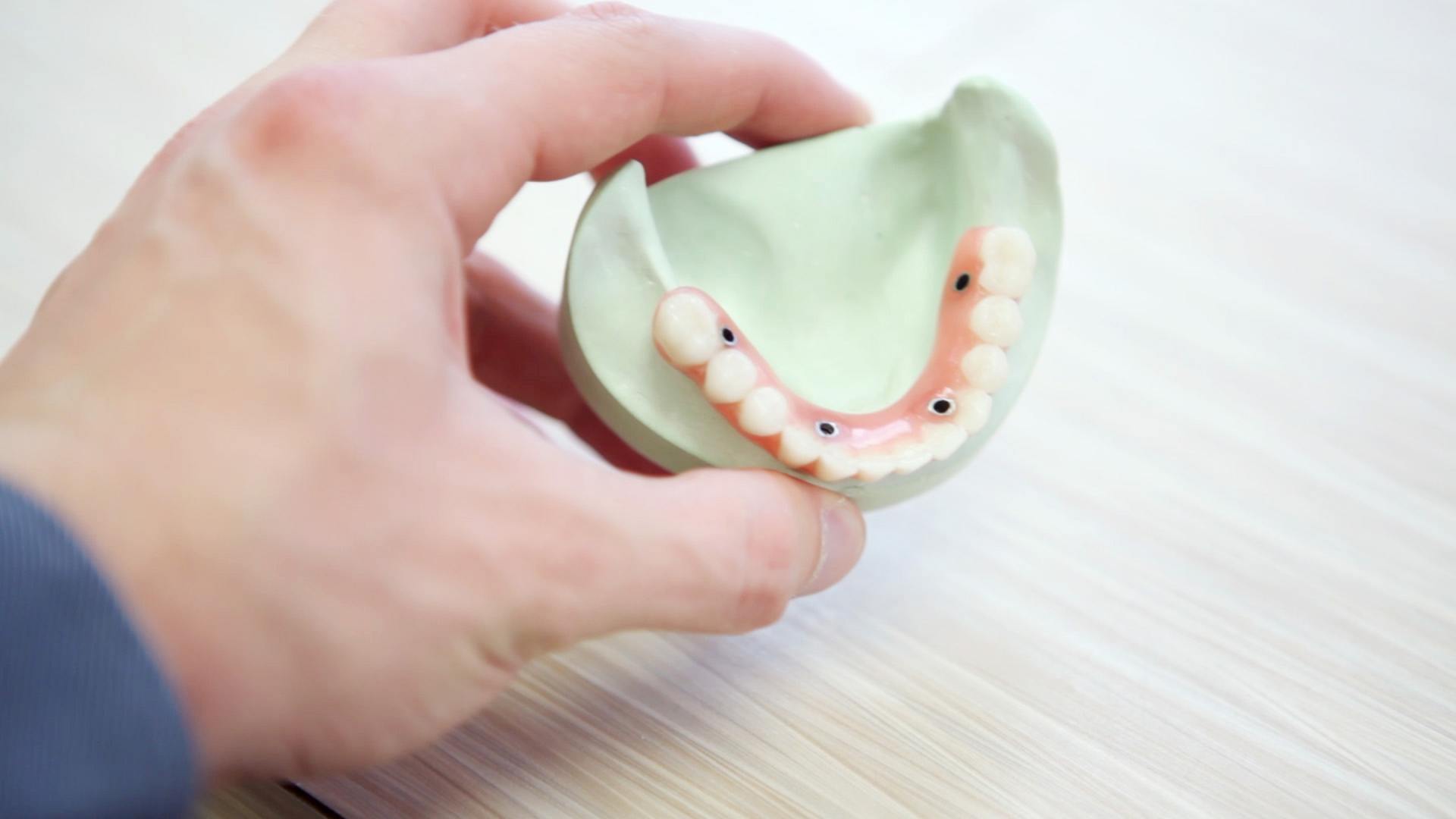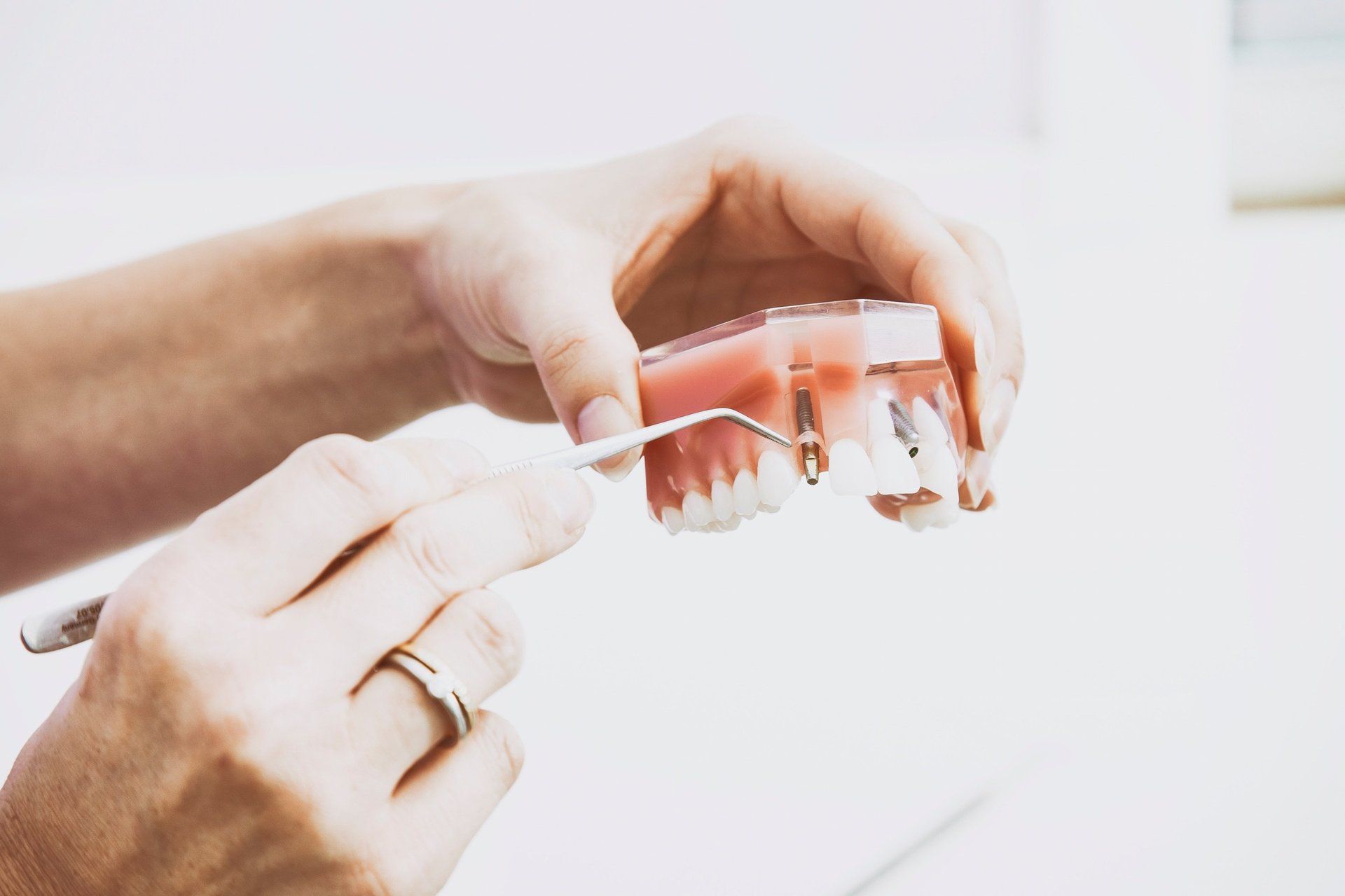Vernon Hills, IL Dental Bridge Implants Services
Serving patients in Vernon Hills, Libertyville, Lincolnshire and Mundelein, IL since 1992
DENTIST IN VERNON HILLS
Implant-Supported Bridge
If you suffer from missing teeth, Dr. Philip V. Goduco can place an implant-supported bridge at our office in Vernon Hills, IL, to improve your appearance and provide superior functionality and support. Unlike a tooth-supported bridge, an implant-supported bridge, does not rely on the natural teeth for support, which, in turn, improves your oral health and preserves the integrity of your smile.
A bridge is a fixed dental restoration that is utilized when there is one or more missing teeth and it works by joining together an artificial tooth to the adjacent teeth. If you get a fixed bridge, it will be cemented permanently into your mouth and the only way to remove it would be to schedule an appointment with your dentist.
A fixed dental bridge is a false tooth, which is called a “pontic,” and it is held in place by the teeth that are on either side of it. There are many different materials that the pontics are made from, including porcelain, gold, alloys and zirconia, and a material will be chosen so the false tooth will best match the color of your other teeth around it.
In order for the bridge to connect to the adjacent teeth, the natural teeth have to be filed down first to ensure there is enough space for the crowns to get aligned properly and also leave enough surface area to make sure a strong connection can be formed. In order for a bridge to be successful, the natural teeth need to be healthy and free of decay. One of the drawbacks of this process is that it cannot be reversed. After the natural teeth have been altered, they cannot serve as regular teeth again.
If you need to have more than three teeth that are in a row replaced, it will probably be better if you are fitted for a fixed partial denture.
In addition to the traditional dental bridge, another option is the cantilever bridge. This type of bridge can be utilized if it is not possible to put a crown on both sides of where the gap is. For a cantilever bridge, the pontic is held in place by a dental crown that is cemented to only one abutment tooth. So for this type of bridge, you only need to have one natural tooth next to where the missing tooth is.
Another type of bridge is the Maryland dental bridge. This type of bridge is similar to a traditional bridge, in that it employs two natural teeth, but the difference is that while a traditional bridge uses dental crowns to anchor the false tooth, a Maryland bridge utilizes a framework of porcelain or metal that is bonded to the back of the abutment teeth.
The Maryland dental bridge is not as strong or as permanent as a traditional dental bridge or a cantilever bridge, so there is a risk of the bridge falling out or breaking off if there is a great deal of wear and tear. If this happens, the prosthesis will need to be cleaned and reattached.
Tooth-Supported Bridge (Traditional)
Tooth-Supported bridges are the most common type of bridges. If you suffer from missing teeth, Dr. Philip V. Goduco can place a tooth-supported bridge at our office in Vernon Hills, IL, to improve your appearance and provide superior functionality and support. These dental bridges are supported by the natural teeth adjacent to your missing teeth.
Dental implants are the closest that you can come to a natural tooth and it consists of an artificial tooth root, which is similar in shape to a screw. The dental implant gets placed into your jawbone during a short surgical procedure, and it will then bond with your bone so it is anchored strongly. This allows it to be a sturdy base to support one or more artificial teeth.
This osseointegration process can take 3-6 months and once the process is finished, the next step is to take the abutment and attach it to the dental implant.
What is an Implant-supported Bridge?
An implant-supported bridge is a non-removable, stable prosthetic crafted from natural-looking materials. It is designed to replace one or more missing teeth in a row. Unlike a traditional bridge that is affixed to the surrounding natural teeth, an implant-supported bridge attaches to implants that are surgically embedded in the jaw. This restores the missing teeth from root to crown.
Implant-supported restorations actually improve your oral health by preventing the jawbone degeneration that results from missing teeth.
An implant is not always required for each missing tooth. The number of implants you need will largely depend on how many teeth you are missing and the health of your jawbone.
Am I a Candidate for an Implant-supported Bridge?
If you are missing two or more teeth in a row, you may be a candidate for an implant-supported bridge. Dental implants require a strong, dense jawbone. If you do not have adequate tissue to support the implants, you may first need a bone graft or other procedure to qualify for implants.
Any other underlying oral conditions must be addressed prior to dental implant surgery, such as tooth extractions or treatment for periodontal disease. It is recommended that you are in good overall health prior to surgery and that you are committed to proper oral hygiene, including regular check-ups, going forward.
What to Expect During Treatment
The process of receiving an implant-supported bridge can vary slightly between patients but generally includes several phases.
Benefits of an Implant-supported Bridge
The process of receiving an implant-supported bridge can vary slightly between patients but generally includes several phases.
Consultation and Preliminary Treatments
VIEW GALLERIESDuring a consultation with Dr. Goduco, he will examine your teeth, gums, and jawbone to determine your candidacy for treatment. He will also discuss your goals and budget with you, so that he can select the most beneficial restoration. If you require additional treatments to qualify for dental implants such as a bone graft, these procedures can be scheduled at this time.
Dental Implant Procedure
Once you are made comfortable with sedation, Dr. Goduco will place your implants during a minor surgery. Over the next three to six months, your implants will fuse with your jawbone, providing a permanent and stable foundation to support your bridge.


